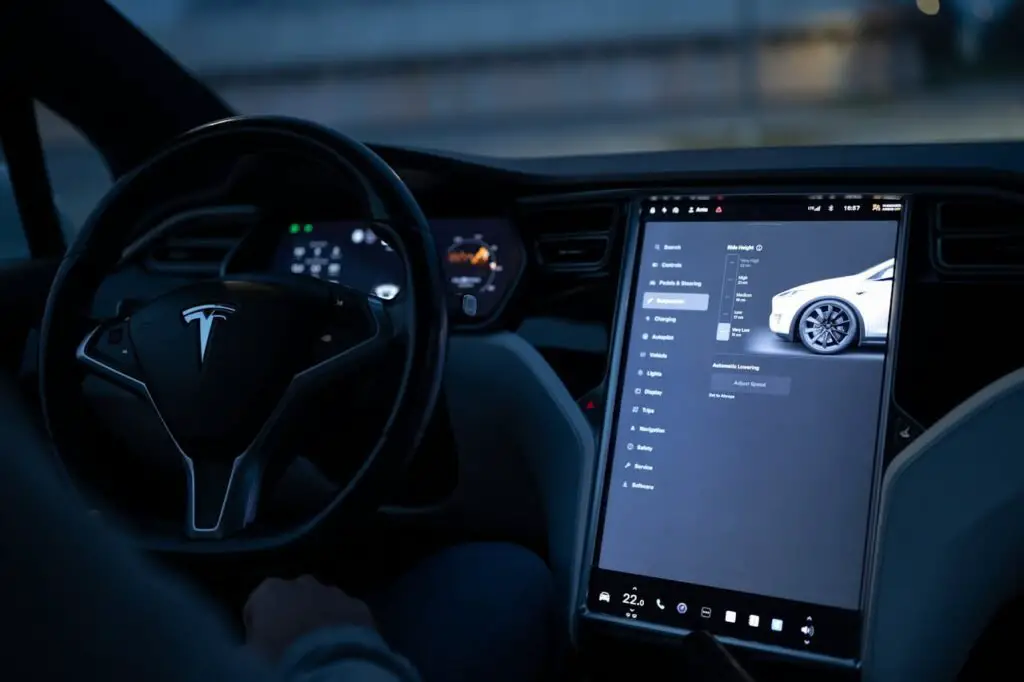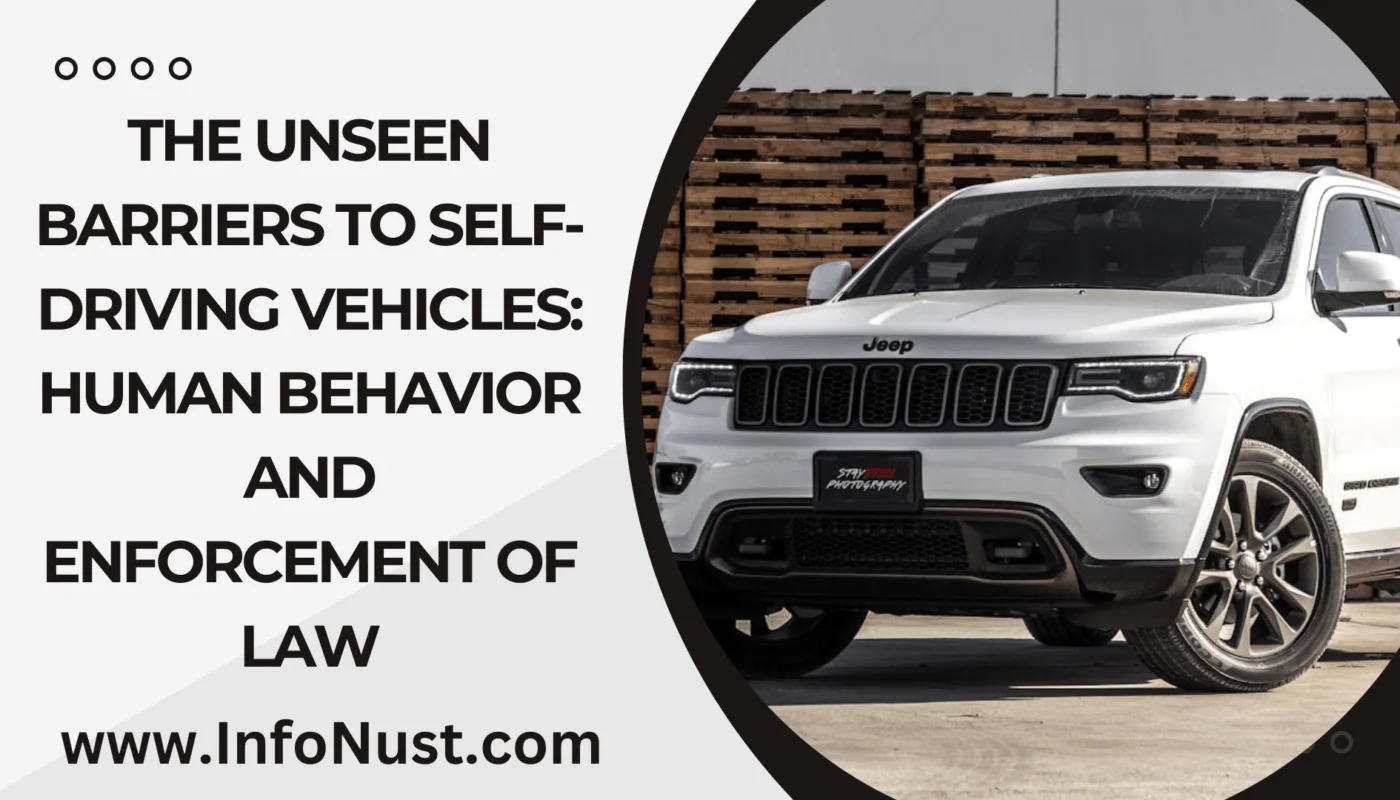The Unseen Barriers To Self-Driving Vehicles, There was a time when autonomous vehicles (also called driverless vehicles). Were touted as one of the most desirable things ever since bread slices. The vehicles of the future will be fully autonomous and operate with no input from humans and, most likely safely. It was promised that there would be a future. Where the tiring and tiring job of driving could be entirely controlled by the computers within the car. The only thing passengers need to do is unwind, relax and take in the journey. In the absence of human interaction, the vehicles will reduce or even eliminate accidents caused by human errors.
Advancement

The advancement for autonomous vehicle has been slow but it has been steady. Even the most well-known automakers are yet to bring fully autonomous vehicles onto markets. By 2024 the majority of businesses have decided to equip their vehicles with less modern ADAS (Advanced driver assistance system) technology. Instead of making them fully autonomous.
While they’re not able to focus on providing complete autonomy to automobiles. ADAS features that are offered on these vehicles include blind spot information systems. Lane departure warnings as well as adaptive cruise control and the capability to regulate the traction. In more modern cars, active security features, like collision avoidance. As well as automatic emergency brakes are some of the most popular features that offer a certain level autonomousness.
What’s stopping major car manufacturers from releasing cars with autopilot features? It’s not straightforward to determine. We made the exact question at the doctor. Laine Mears, Automotive Manufacturing Chair at Clemson University. Expert in the field of automotive with decades of experience in the field. Laine Mears is an acknowledged expert in the area. Laine offered some intriguing suggestions to share. The Unseen Barriers To Self-Driving Vehicles.
The technology that allows autonomous driving isn’t there yet.

There’s been a variety of advances on the road to create cars that are totally autonomous. However, Professor. Laine believes that despite these developments we aren’t ready to think of completely autonomous cars. That adapt to the needs that are present in our world.
“The Technology is just not there yet,” Laine states. Laine. “Tesla has rolled the FSD system to all its vehicles earlier in the year. However, a lot of people discovered. That there were certain serious bugs to iron out (e.g. the wrong turn and aggressive maneuvers, and failure in yielding right-of-way). “
the Dr. Laine also believes that any autonomous driving technology targeted towards the U.S. Market will need to be aware of the diverse driving conditions in the U.S. “One aspect of adoption to consider relative to the U.S. is that there is little standard behavior of drivers. Some people like to cruise in the passing lane. Fail to keep right, and merge in many creative ways,” Dr. Laine states. The Unseen Barriers To Self-Driving Vehicles.
This is due to the fact that a few significant automakers no longer provide readily available fully autonomous vehicles. Presently on the market are Mercedes-Benz with a particular S-Class model in the United Kingdom. Honda and Legend of Japan, and Honda together with Legend in Japan. Only provide a lower level of autonomy (SAE Level 3). Which is two levels below what is considered to be fully autonomy in vehicle operation (SAE Level 5).
In the event we don’t experience a significant advancement in this area. It is expected that we will observe vehicles adopting lesser degrees of automation (like ADAS). Before moving towards fully autonomous cars. The Unseen Barriers To Self-Driving Vehicles.
There are also the legal requirements for autonomous driving.

While research into completely autonomous cars has been underway for a considerable amount of time. In the month of April in 2024 there were just few areas that permit drivers to travel in autonomous vehicles. For the U.S., these places include Phoenix, San Francisco, and Los Angeles, where Google-owned Waymo manages these services.
It is vital to note there is no proof that the vehicles working in cities fulfills the criteria needed to be deemed “fully autonomous. ” Waymo’s driverless cars have been all certified as SAE Level 4 vehicles. This is what makes them autonomous, but they are only able to operate in the specific geographical region.
One major reasons for the slow progress for driverless cars is legal concerns concerning their legality. Because the driverless vehicle’s use doesn’t completely eliminate the chance for accidents. There’s a constant controversy over who is responsible for accidents caused by a fully autonomous car. Waymo is currently under investigation by authorities from. The National Highway Safety Administration for more than a dozen driverless crashes as well as the traffic infractions. Tesla was getting news coverage after its settlement with a lawsuit brought on behalf of the family members of a engineer who died during a collision in auto-piloted Tesla automobile.
However, since driverless vehicles are still in the early stages in development, regulations about them are also evolving. This makes it challenging for car makers to warrant. That their vehicles are in conformity to the various regulations that are set by local officials. For instance within the U.S. for example. Only a handful of states are willing to allow driving-less vehicles by businesses operating within their borders. This differs from other regions like Japan and China which are more open to driverless vehicles.
Q&A
What’s the major human behavior problems for autonomous vehicles?
The Human behavior can pose a number of issues for self-driving vehicles, which include the unpredictable behavior of pedestrians, cyclists and cyclists and the other motorists. Self-driving vehicles need to be able to adapt to a variety of human behavior, ranging from joggers and pedestrians to the unpredictable driving of others. In addition the trust and acceptance of the technology’s autonomy will play a major role on the performance of the technology as resistance and hesitancy may slow the adoption process.
What will the regulations of the law impact how autonomous cars are used?
The enforcement of laws could affect the development of autonomous vehicles in a variety of ways. The first is that there must be clear guidelines and rules for autonomous vehicles to guarantee security and safety of the vehicle. It includes rules for how autonomous vehicles must respond in various traffic situations and how they are assessed and test. Additionally, there should be legal guidelines that guarantee that there is accountability for an accident or mishaps involving autonomous vehicles.
What legal issues must be addressed prior to the adoption in mass of autonomous vehicles?
The A crucial legal issue is determining the degree of responsibility in the case of an accident and also protecting against hackers from taking data from autonomous systems and creating uniform rules for different areas. Privacy concerns regarding the data that autonomous vehicles gather have to be addressed, ensuring that the personal information of customers is protected.
In what ways can humans’ behaviour change with autonomous vehicles?
Human behavior is unpredictable due to the impact of external factors like abrupt changes in the lane or reckless driving. violations of road signals. pedestrians may walk across the streets in a surprising manner, or cyclists may not always follow the traffic rules. These kinds of unpredictable actions need self-driving vehicles equipped with the latest sensors and decision-making capabilities to respond promptly and ensure safety.
How is the perfect way to assure that people trust self-driving cars be improved?
The A trust in the public could be increased by clear and transparent information about the capabilities and limitations of this technology as well as rigorous safety testing, and gradually introducing autonomous capabilities in automobiles. The demonstration of the security and dependability of autonomous vehicles via tests in real-world environments can help improve the confidence of people.
What impact cybersecurity will play in the development autonomous vehicles?
The Security is a must in the development of autonomous vehicles as they depend on complex software and connections in order to function. Making sure that the autonomous vehicle is secure from cyber-attacks and hacking is essential to prevent security risks that could compromise the safety of drivers as well as the security of passengers. Security measures to protect against cybersecurity are essential to safeguard the data and systems used by self-driving vehicles.
In what way can traffic laws be changed to allow for autonomous vehicles?
Traffic laws could need to be changed in order to deal with the unique circumstances of autonomous vehicles, such as the way they interact with other human driven pedestrians, vehicles, as in addition to other road users. It is possible that new rules will be required to set safe operating limits for autonomous vehicles. They can also establish rules for traffic-mixed spaces and define guidelines for the communication between vehicles.
What could be the possible advantages of autonomous vehicles in relation the law enforcement community?
A Autonomous vehicles may reduce the number of traffic violations and accidents caused by human beings, resulting to safer streets. They also assist police officers by providing the latest information regarding road conditions as well as accidents. Additionally, autonomous vehicles are able to be programmed to adhere to with traffic regulations, resulting in more compliance with the rules.




